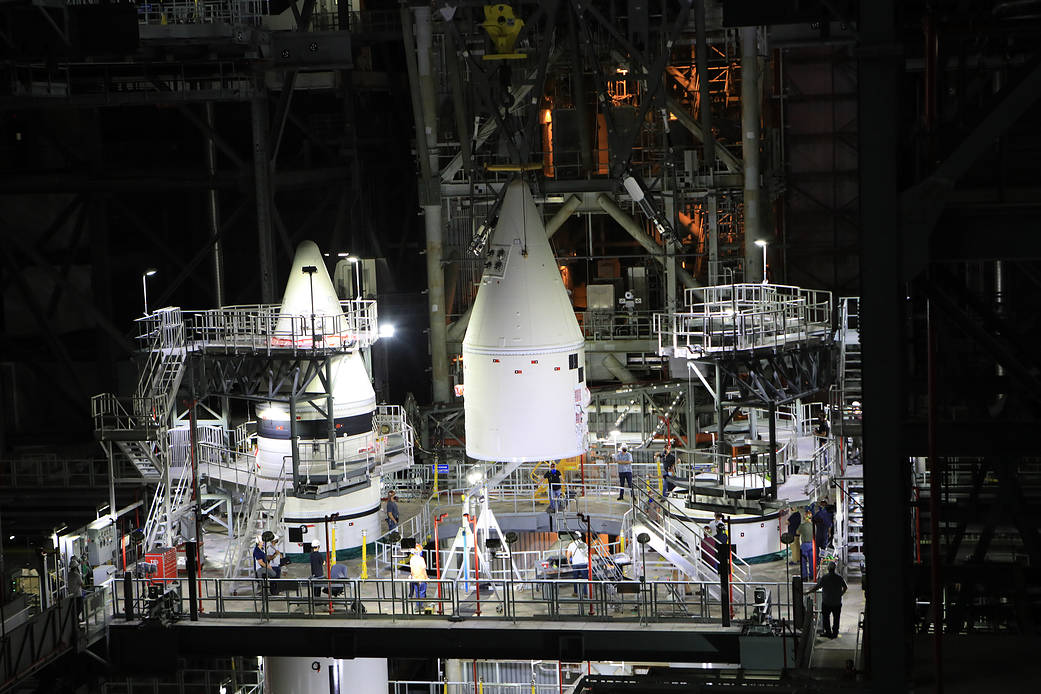
NASA’s Exploration Ground Systems team at the agency’s Kennedy Space Center in Florida has completed stacking the solid rocket boosters that will help power NASA’s Space Launch System rocket for Artemis I, the first integrated lunar mission of SLS and NASA’s Orion spacecraft through the agency’s Artemis program. Technicians placed the forward nose assemblies on top of the forward booster motor segments of each booster March 2 and 3. The fully assembled boosters are the largest, most powerful solid rocket boosters ever built for spaceflight. Each five-segment solid rocket booster will produce more than 3.6 million pounds of thrust to propel NASA’s Artemis missions beyond Earth’s orbit to the Moon. The solid rocket boosters are the first elements of the SLS rocket to be stacked on top of the mobile launcher inside the Vehicle Assembly Building at Kennedy. Together, each 17-story-tall booster, which features the NASA “Worm” logotype, bear the full weight of the SLS rocket. Next, teams will finish outfitting the boosters and prepare for the arrival of the SLS core stage following completion of the core stage Green Run test series at NASA’s Stennis Space Center near Bay St. Louis, Mississippi. The core stage will be integrated with the boosters on the mobile launcher, then the interim cryogenic propulsion stage and Orion spacecraft will be stacked on top and readied for launch.
NASA is working to land the first woman and the next man on the Moon. SLS and Orion, along with the human landing system and the Gateway in orbit around the Moon, are NASA’s backbone for deep space exploration. SLS is the only rocket that can send Orion, astronauts, and supplies to the Moon in a single mission. (NASA)



























